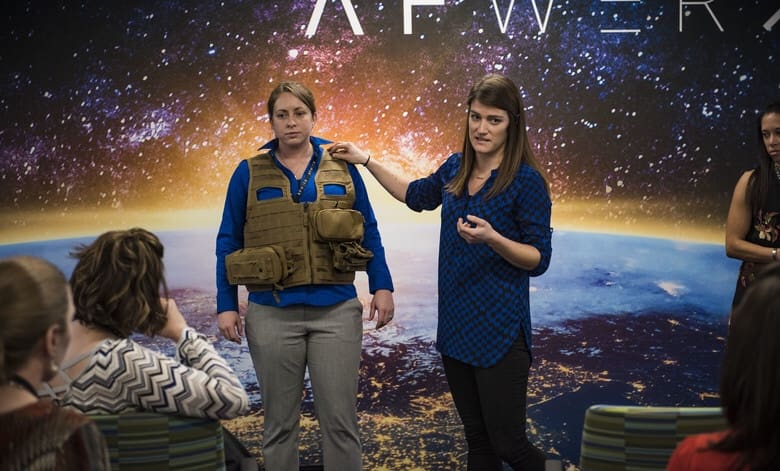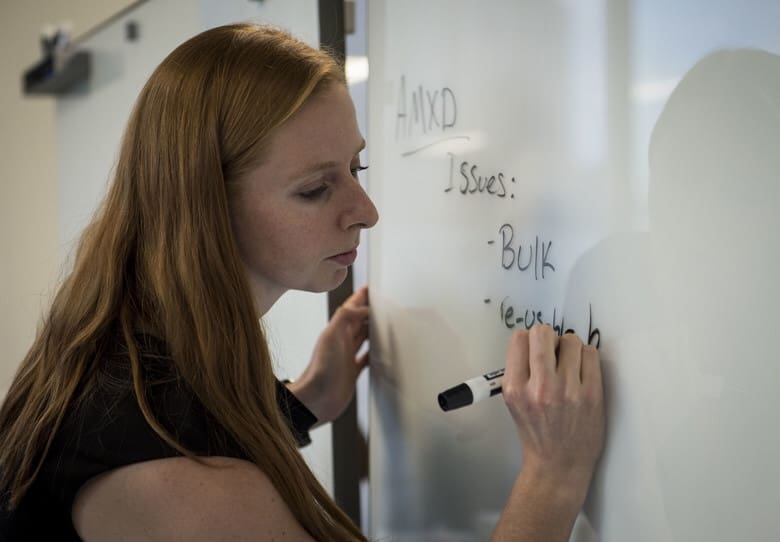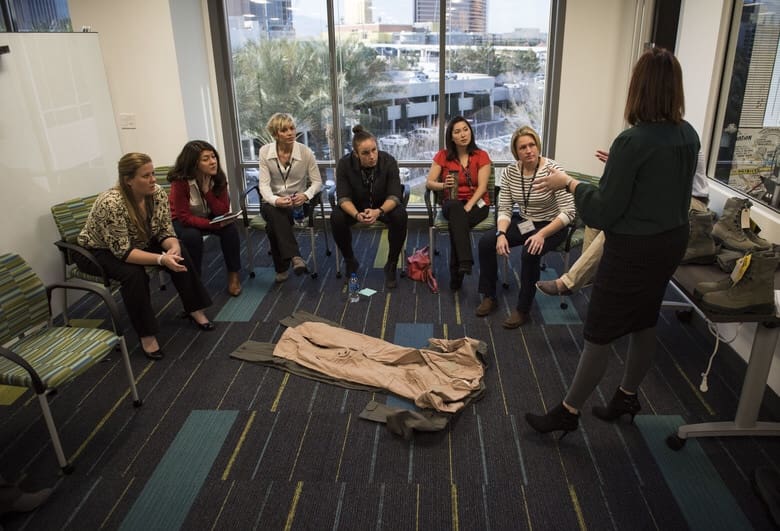
NELLIS AIR FORCE BASE, Nev. (AFNS) —
The Air Force is working to redesign the gear used by female pilots across the force after facing challenges with current flight equipment.
“We have women performing in every combat mission, and we owe it to them to have gear that fits, is suited for a woman’s frame and (one) can be in for hours on end,” said Air Force Chief of Staff Gen. David L. Goldfein at a Defense Writers Group breakfast, March 2018 in Washington, D.C.
The majority of the equipment currently worn by pilots was built off anthropometric data from the 1960s, a time when only men were in aviator roles.
The lack of variety and representation in the current designs have caused multiple issues for women, said Col. Samantha Weeks, the 14th Flying Training Wing commander, assigned to Columbus Air Force Base, Mississippi.
Many of the uniform issues circulate around G-suits, flight suits, urinary devices and survival vests.

“The challenges other female aviators and I face are the fit and availability of our flight equipment,” said Capt. Lauren Ellis, 57th Adversary Tactics Group executive officer.
Limited sizes and accessibility often force aircrew to order the wrong size and have it extensively altered to fit properly, taking time and money away from the mission, Ellis said.
“All of the bladders on my G-suit need to be modified,” Ellis said. “It’s a lot of work for the Aircrew Flight Equipment, or AFE, Airmen. Even after they’re modified, the proportions don’t fit.”
G-suits are vital anti-gravity gear for aviators. The bladders in the suit fill with air and apply pressure to the pilot’s body to prevent a loss of consciousness during high levels of acceleration. Not having a properly fitted G-suit could lead to hypoxia followed by unconsciousness.
Ellis said ill-fitting flight suits are a common problem for men and women. Aircrew who are significantly above or below average height have a hard time finding suits that fit their body type.

Even if a woman found a flight suit close to her size, the flight-suit zipper is designed for men—not women. Female aircrew struggle with relieving themselves during flights because the flight-suit zipper isn’t designed low enough for them to properly use their urinary devices.
“There are flight suits that were designed with longer zippers for women, but they’re almost never available,” Ellis said. “It’s common for females to have to wait months to receive the flight suit they’ve ordered which causes them to have to wear the male one.”
Along with the possibility of injury and discomfort associated with G-suits and flight suits, women struggle to get their life-saving gear to fit accordingly. The process of ejecting is so powerful, even pilots with well-fitting gear are at a serious risk of injury. It’s important for aviators to be heard and the modernization of equipment for everyone continues, Ellis said.
“In certain situations, having ill-fitting gear, such as harnesses and survival vests, can result in a loss of life,” Ellis said. “If an aircrew member ejects from the aircraft with equipment that doesn’t fit, they can be severely injured or lose their life.”
The Air Force and Air Combat Command are working to find a feasible solution for aircrew members.

Part of the strategy to correct the uniform problem was to take part in several collaborative Female Flight Equipment Workshops at AFWERX Vegas. Female Airmen stationed across the globe traveled to the innovation hub and attended the workshops to explore areas of opportunity and come up with proposed solutions.
“The purpose of the workshops is to bring together female aviators, Aircrew Flight Equipment, Human Systems Program Office personnel and subject matter experts to understand the current products, the acquisition process and the actual needs from the field,” Weeks said.
Throughout the workshops, aviators participated in briefings, as well as discussions and exercises with the agencies involved in the design and distribution of their gear.
“The Human Systems Program Office acquires and sustains all equipment for male and female Airmen,” said Lt. Col. Elaine Bryant Human Systems Program Office deputy chief, assigned to Wright-Patterson Air Force Base, Ohio. “We are committed to hearing our consumers’ voices, and we will make the changes necessary to our current process to meet their needs.”
The workshops established the communication needed between the consumer, designers and suppliers to reach a mutual goal of understanding and development.
“We now have some pretty clear actions coming out of the Female Flight Equipment Workshops,” Bryant said. “We’ve heard the feedback, and we want to make sure we have actionable things we’re accomplishing within specific time frames for our consumers.”
The Human Systems Program Office will strive to make progressive changes within their operations and better their acquisition process, explained Bryant.
“We will take the field up on their offers of coming out to the units and meeting the aircrew for whom we supply,” Bryant said. “We’ll ensure we maintain the lines of communication needed to better our program.”
Another major improvement for female aviators is the adoption of the Battlefield Airmen Rapid Resource Replenishment System, a centrally managed equipment facility. BARS is capable of shipping needed resources directly to female aircrew. Using this system will allow women to acquire the proper fitting equipment they need within an acceptable timeline.
“BARS is a step in the right direction,” Ellis said. “Everyone deserves to have equipment that fits them. There are certain things we have to adapt to, but as long as we’re trying to improve and modernize our gear, we can be a more ready and lethal force.”
“The Air Force has evolved over the years and continues to evolve,” Weeks echoed. “Female aviators entering the Air Force now will not have the same issues I had over the last 21 years.”
Information from an ACC news feature was used in this story.
By Airman 1st Class Bailee A. Darbasie, 99th Air Base Wing Public Affairs


This is good news and a long time coming. I’ve known several female friends and students who wished for better fitting equipment and clothing.